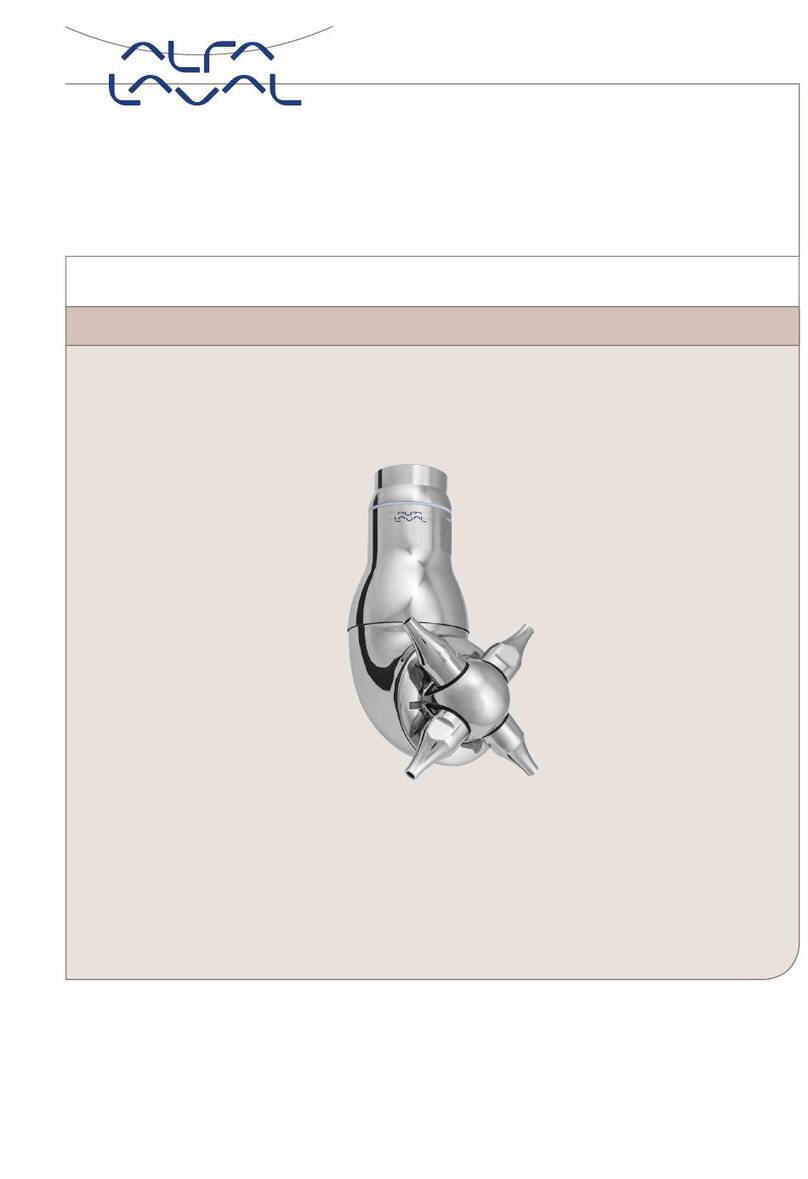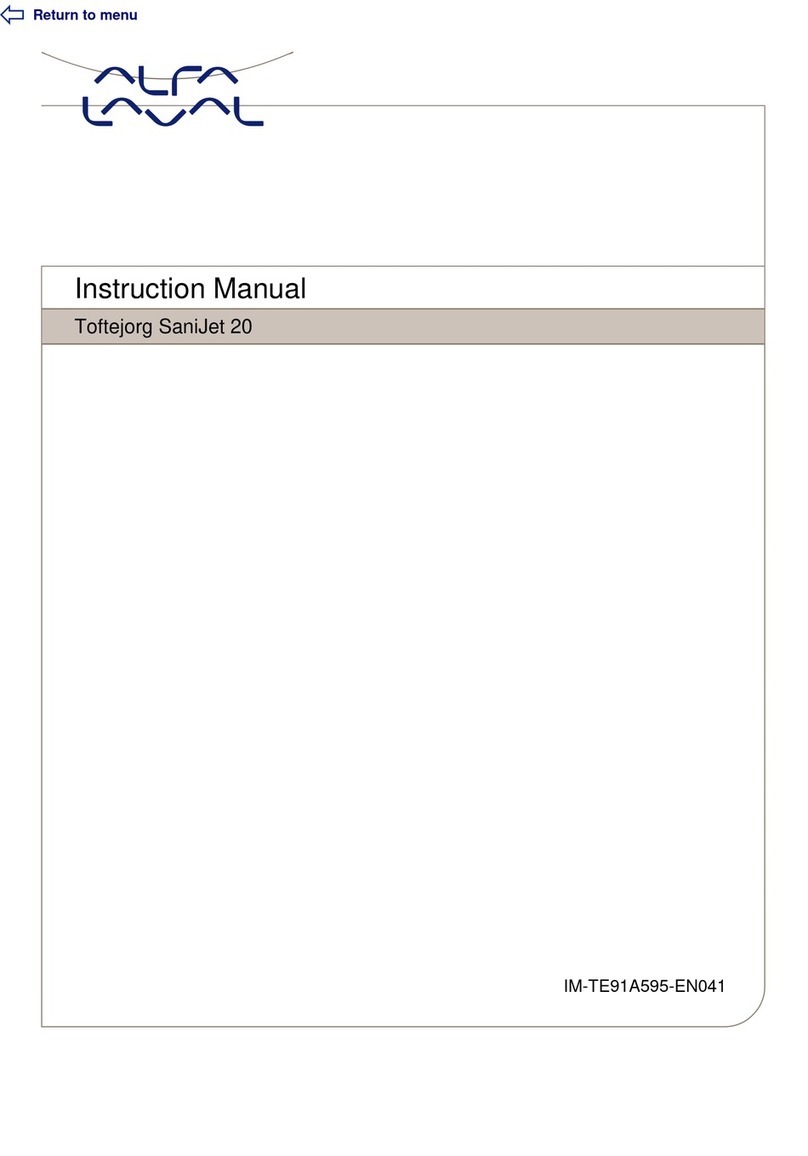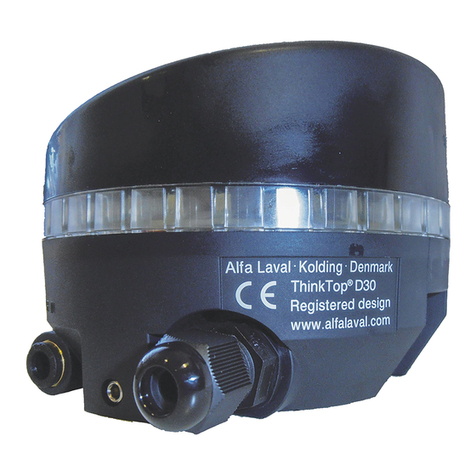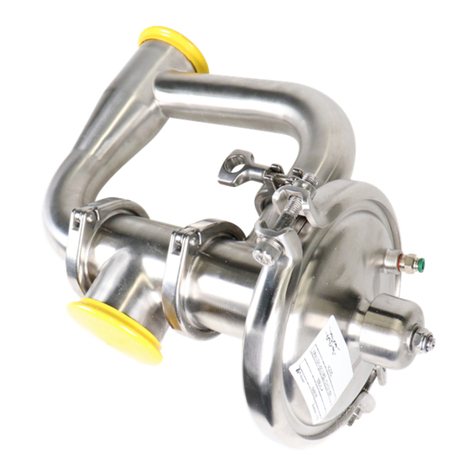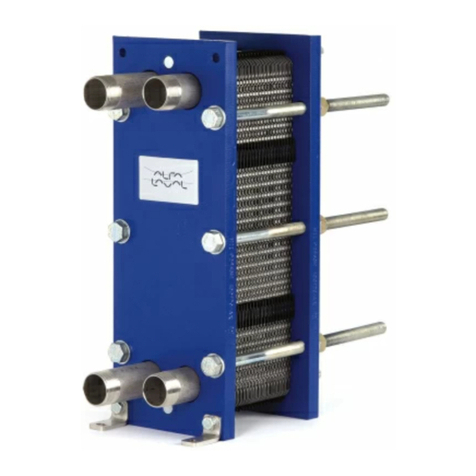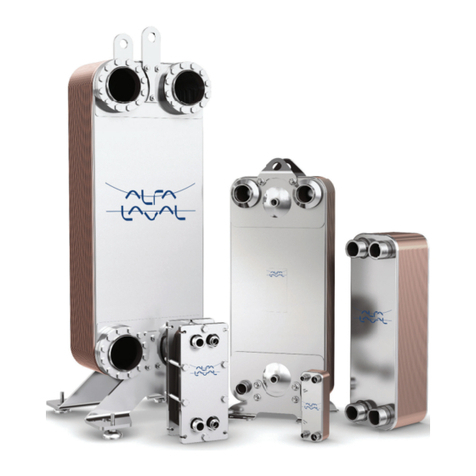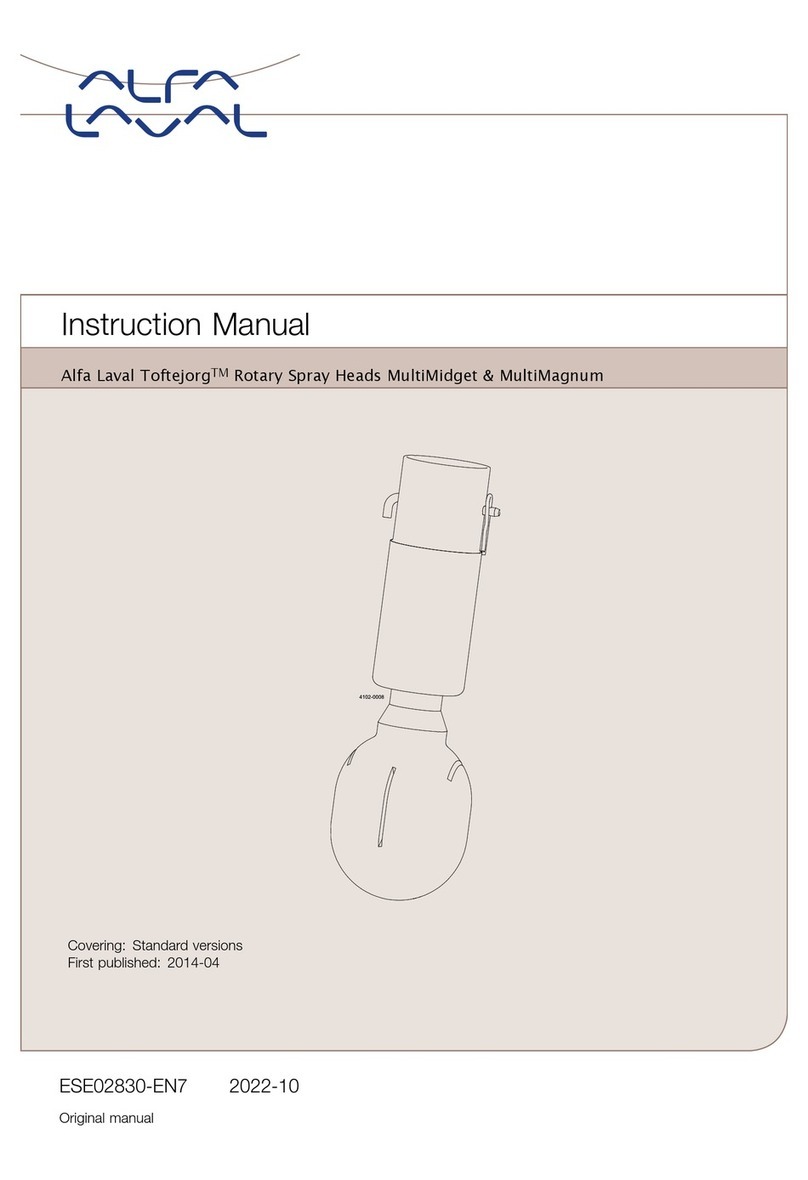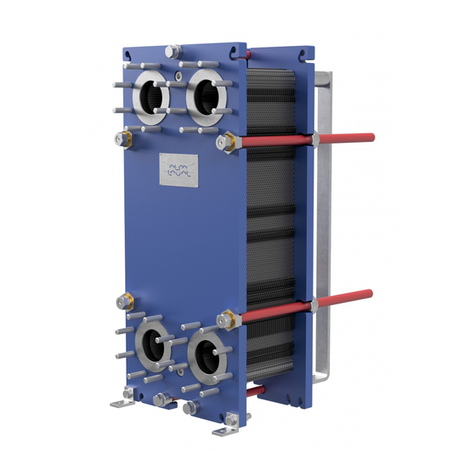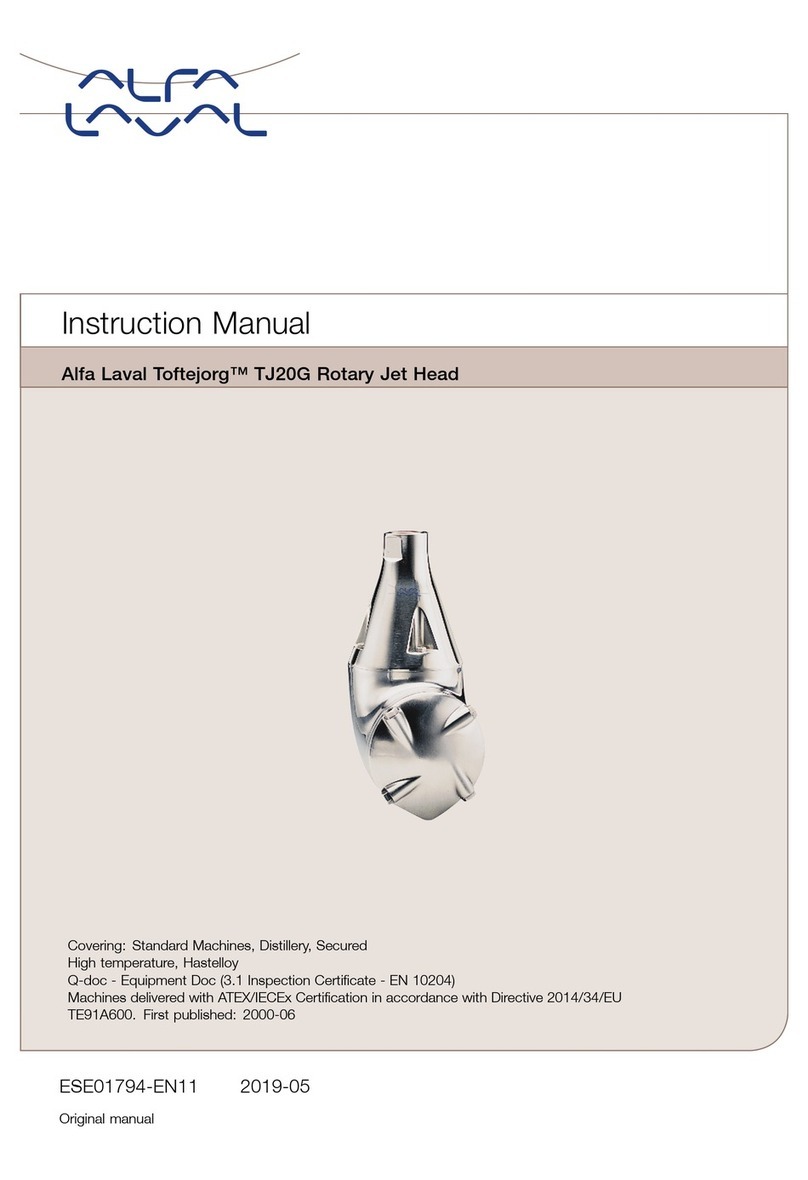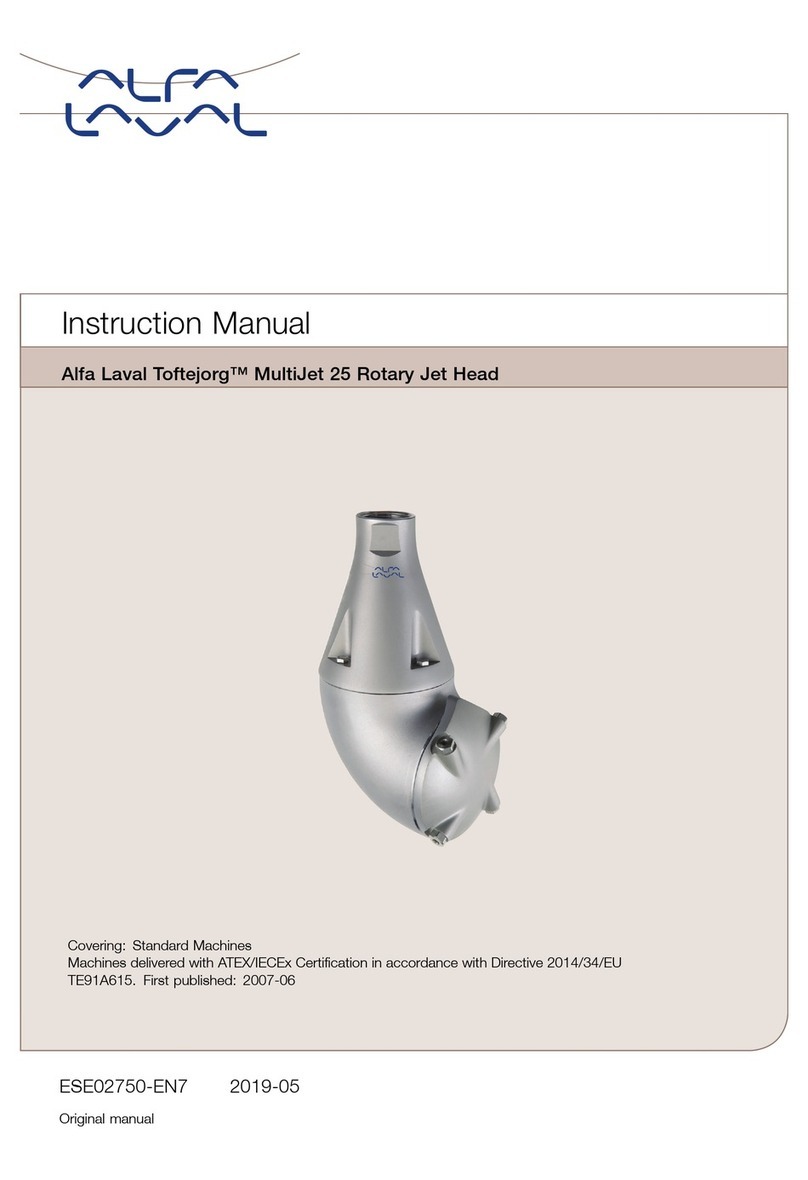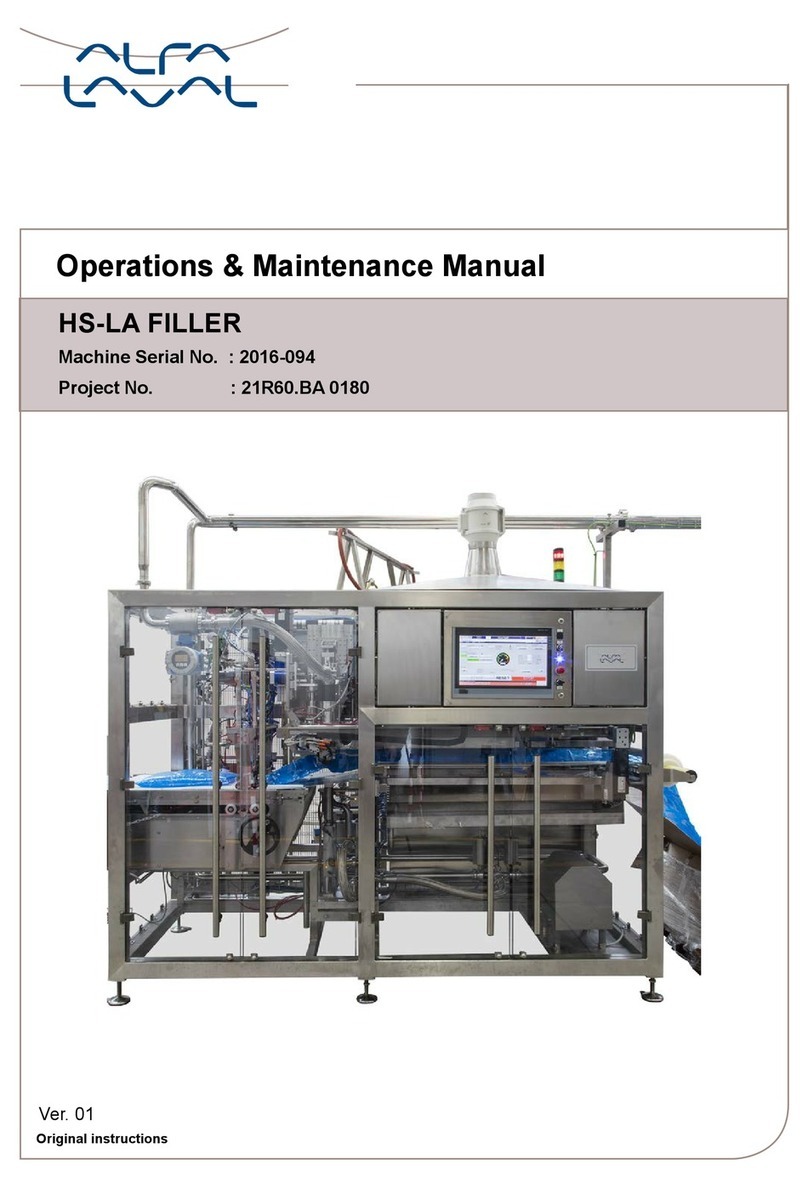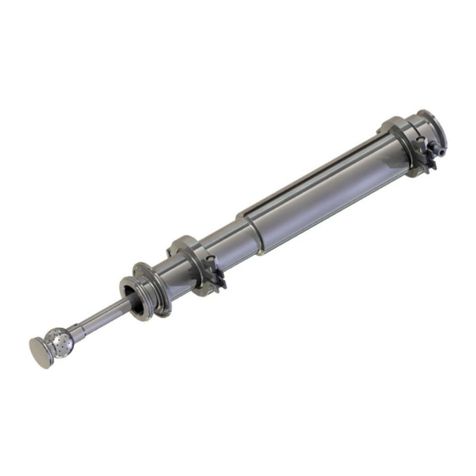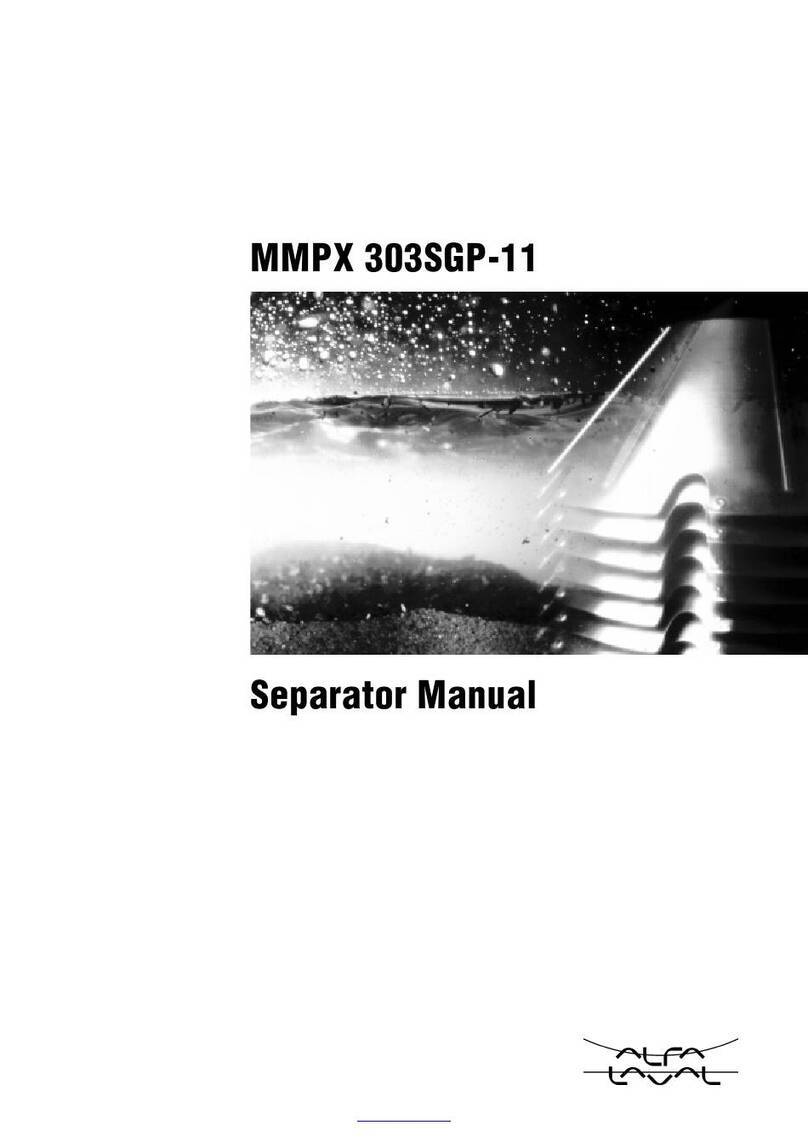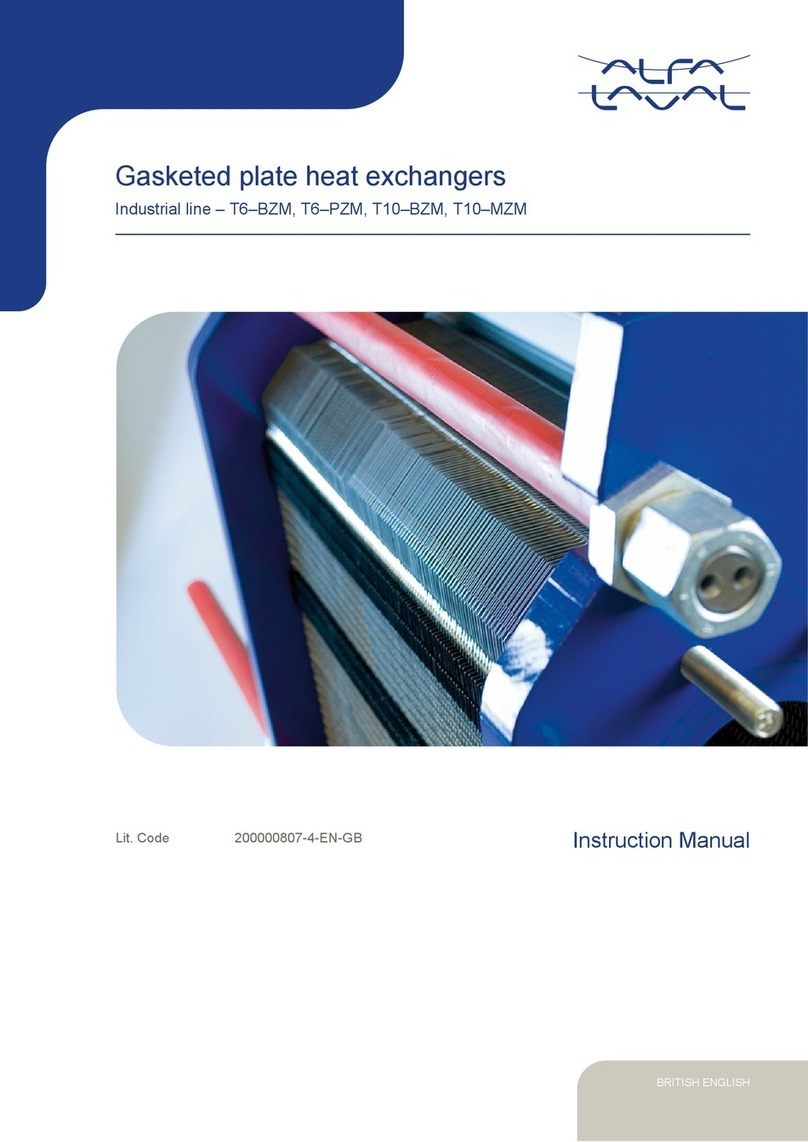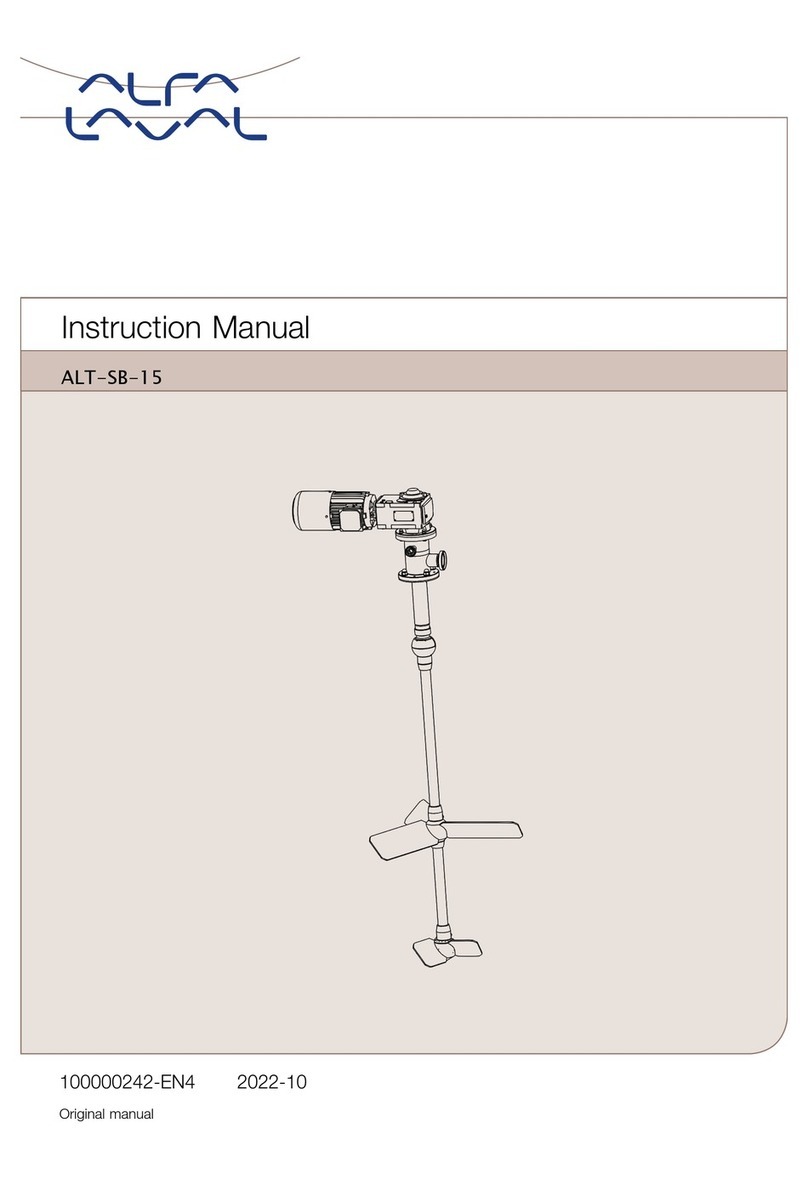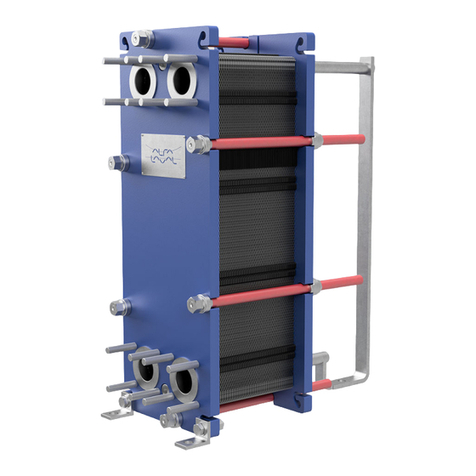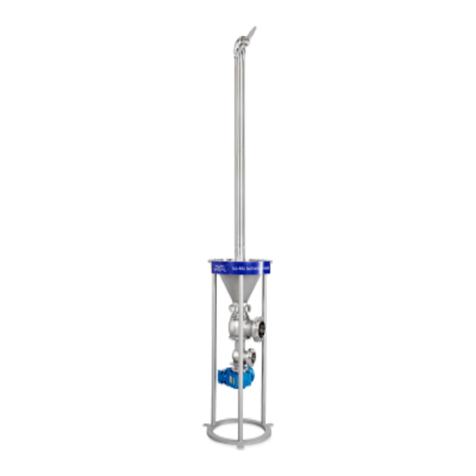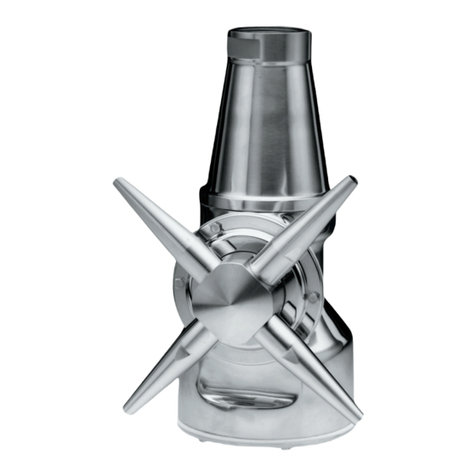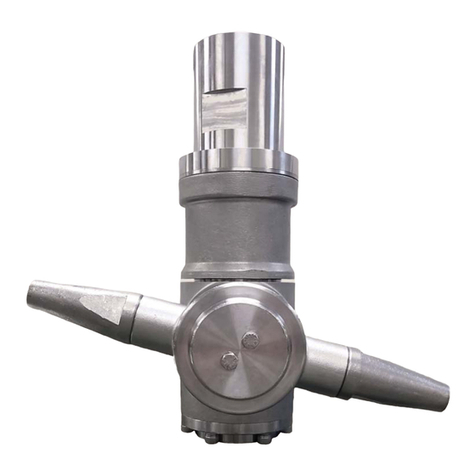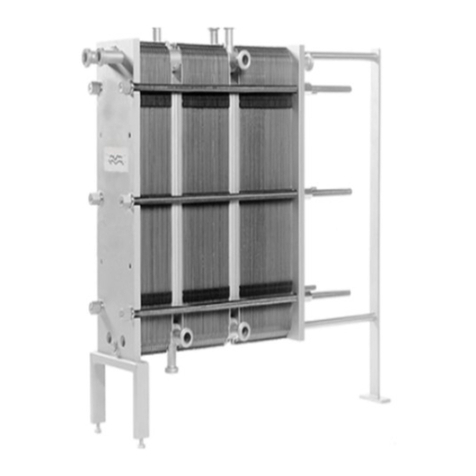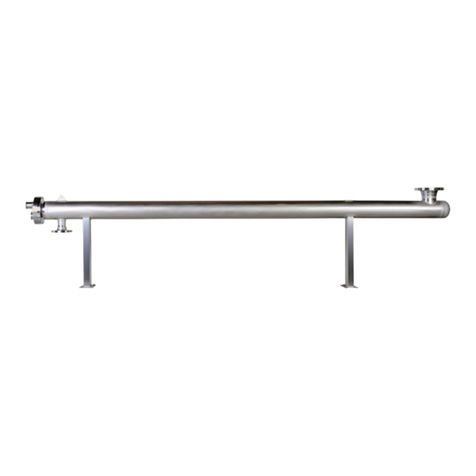
Operation English 7
AlfaNova 14–76, Part no. 34562191-03
Protection against freezing
Bear in mind the risk of freezing at low temperatures. Heat
exchangers that are not in operation should be emptied and
blown dry whenever there is a risk of freezing.
Note! To avoid damage due to freezing, the medium used
must include an anti-freeze agent at operating conditions
below 5 °C/41 °F and/or when the evaporating temperature is
below 1 °C/34 °F.
Protection against clogging
Use a filter as protection against the possible occurrence of
foreign particles. If you have any doubt concerning the
maximum particle size, consult your nearest representative of
the supplier or look under Product information on the supplier's
web site.
Protection against thermal or/and pressure fatigue
Sudden temperature and pressure changes could cause
fatigue damage to the heat exchanger. Therefore, the following
must be taken into consideration to ensure that the heat
exchanger operates without swinging pressures/temperatures.
• Locate the temperature sensor as close as possible to the
outlet from the heat exchanger.
• Choose valves and regulation equipment which give stable
temperatures/pressures for the heat exchanger.
• To avoid water hammer, quick-closing valves must not be
used, e.g. on/off valves.
• In automated installations, the stopping and starting of
pumps and actuation of valves should be programmed so
that the resulting amplitude and frequency of the pressure
variation will be as low as possible.
Protection against corrosion
All components in contact with media are manufactured in
stainless steel grade AISI 316. Media causing corrosion to AISI
316 must not be exposed to the heat exchanger.
Insulation
Heating and cooling insulations are available as accessories.
Shut-down
Note! If several pumps are included in the system, make sure
you know which one should be stopped first.
1. Slowly reduce the flow rate in order to avoid water
hammer.
2. When the valve is closed, stop the pump.
3. Repeat steps 1–2 for the other medium/media.
4. If the fusion plate heat exchanger is shut down for a
longer period, it should be drained.
Draining should also be done if the process is shut down
and the ambient temperature is below the freezing
temperature of the media.
Depending on the media processed, it is also
recommended to rinse and dry the heat exchanger and its
connections.
